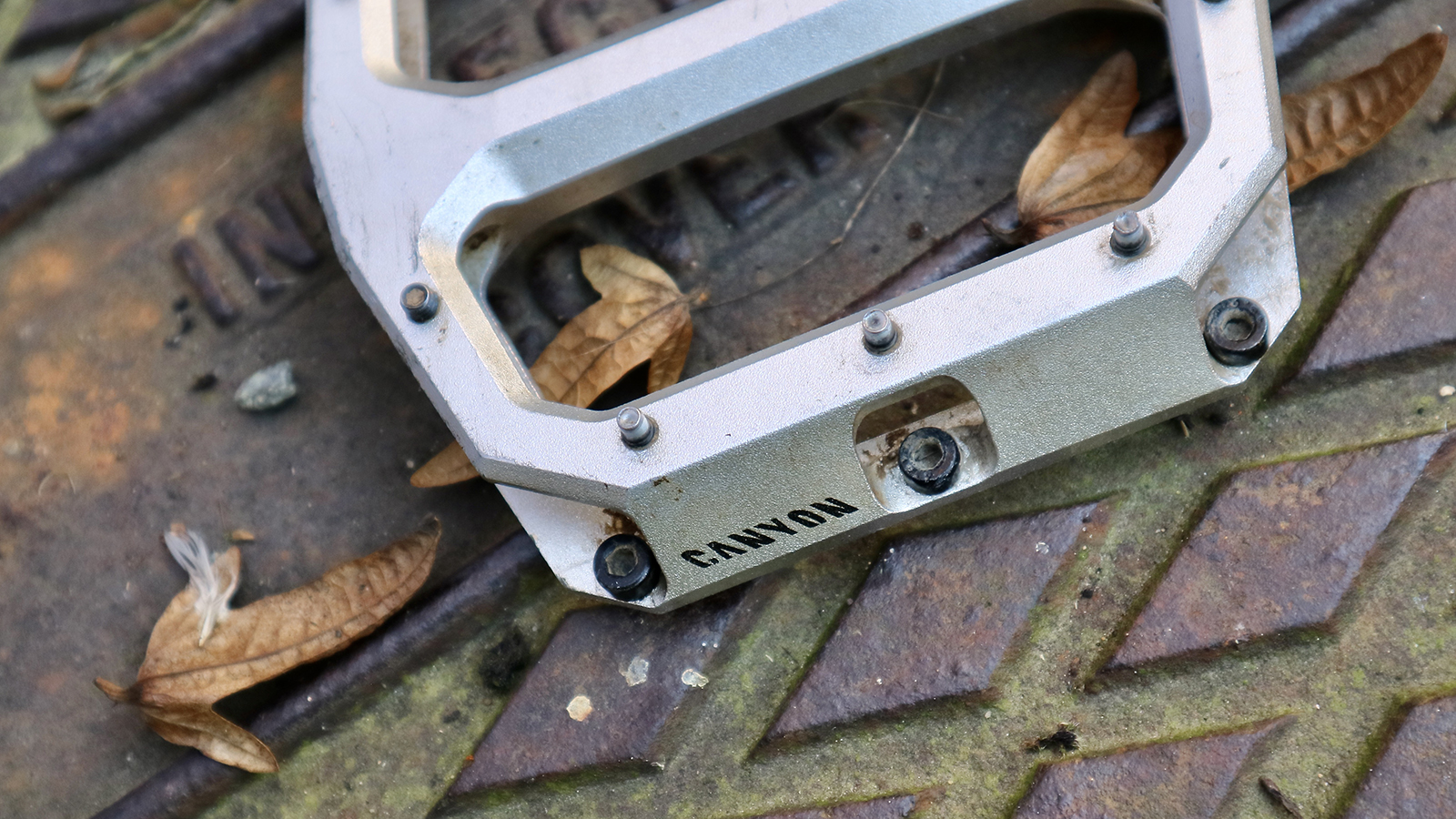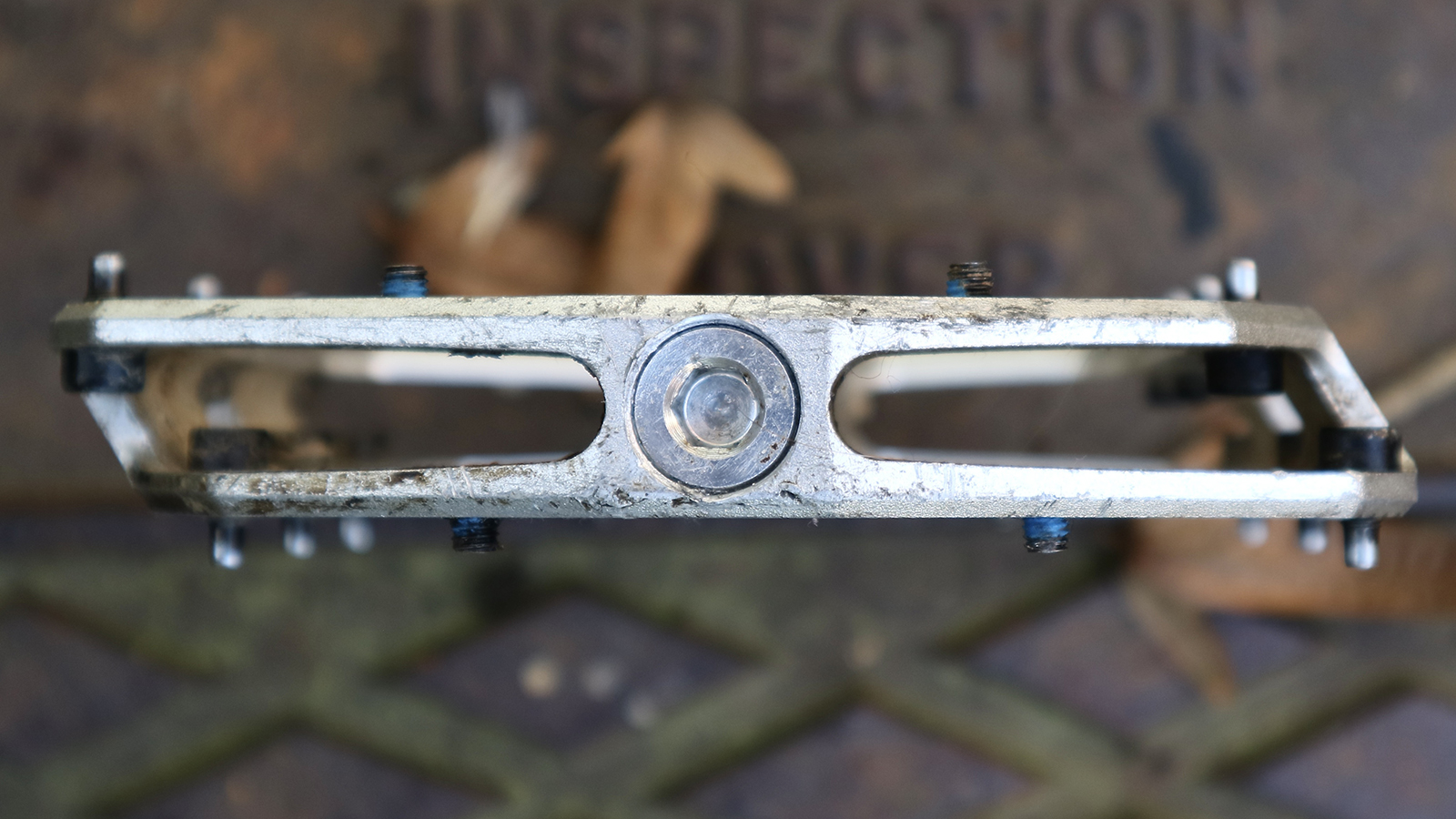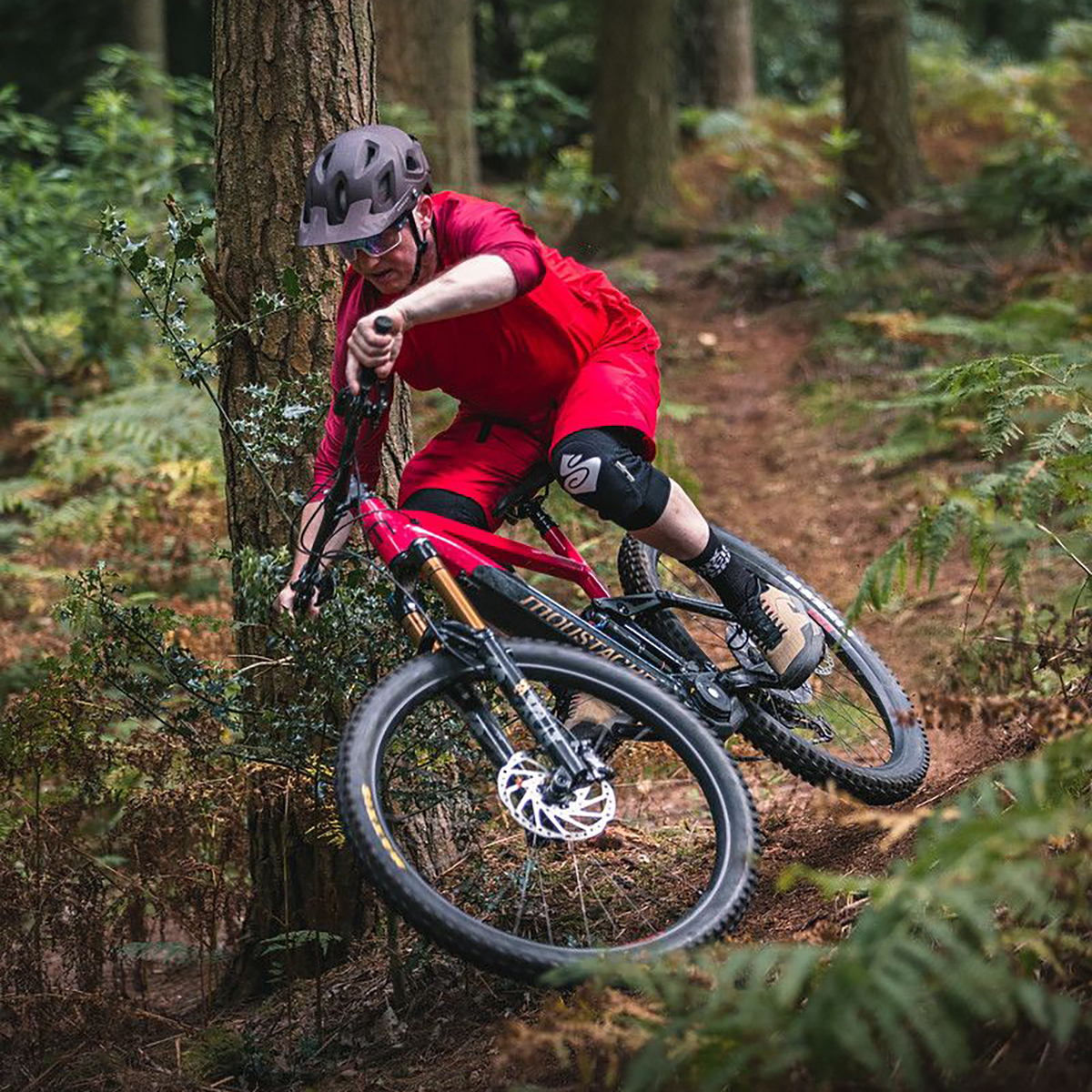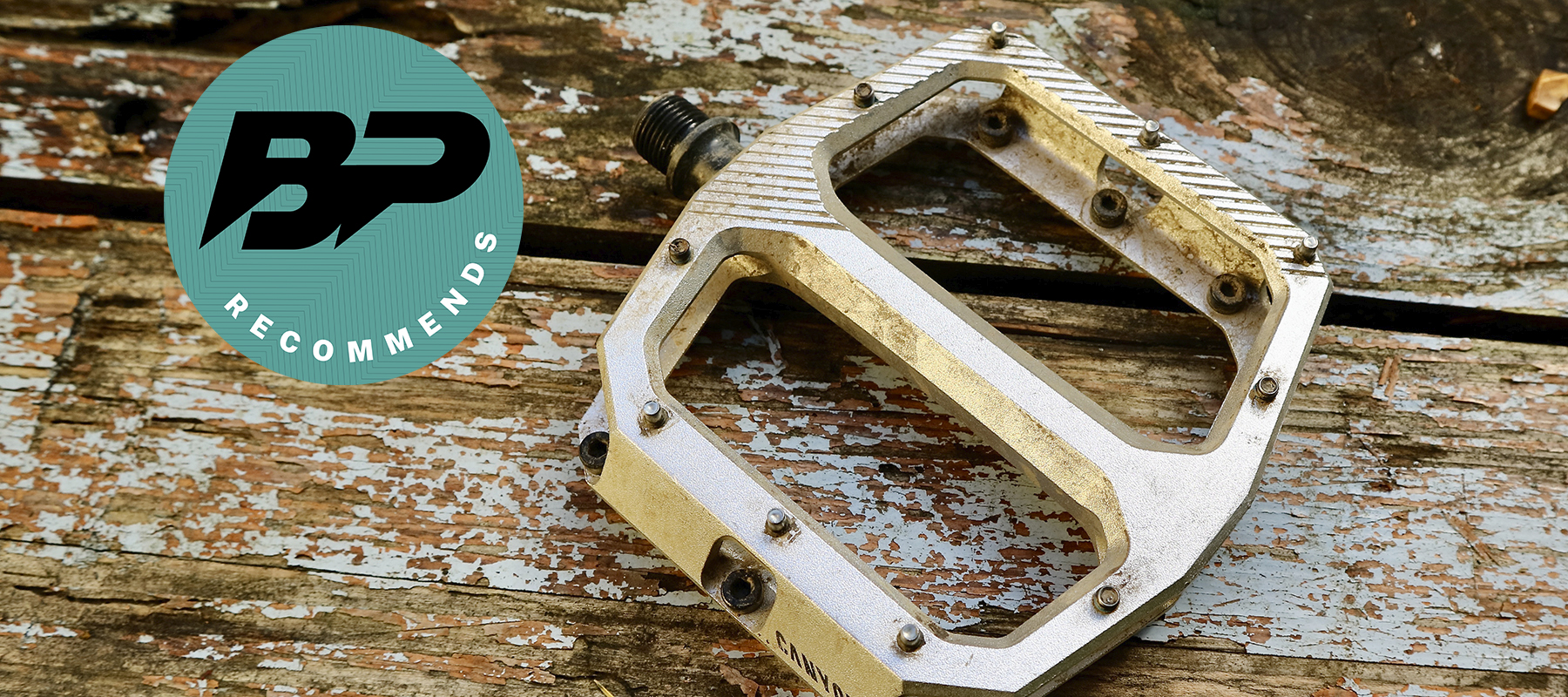Bike Perfect Verdict
Canyon has thought hard about the details of the Performance Flat – it comes in two platform sizes and has a slight amount of concavity but plenty of bite. The durability is only average, and we’d expect the price to be better from a direct sales brand, but if you ever see this pedal discounted on the Canyon website, snap it up.
Pros
- +
Understated concavity for enhanced grip
- +
Height-adjustable pins
- +
Large and small platform sizes
Cons
- -
No spanner flats on axle for fitting
- -
Poor quality axle seal
- -
Pricey for a direct sales brand product
Why trust BikePerfect
Most bicycle manufacturers offer a range of ‘in-house’ components, including bars, stems, saddles and pedals, but often these just come from a Taiwanese catalog and have very little input from the company. Canyon does things differently – it puts some time and design into its componentry. So how does its Performance Flat Pedal compare to the best mountain bike flat pedals out there?

Design and specifications
To accommodate different size feet, the Canyon Performance Flat comes in two platform sizes – small for 36-42 size feet and large for 43–48. It makes sense to match the platform size to your foot dimension but there’s nothing stopping you running the larger size if you have smaller feet, and I’ve done exactly that – I’m size 8 UK (US 11, EU 42) and going with the bigger pedal, which has a 110x109mm platform. It’s 17mm thick measured at the perimeter but is 15.5mm over the axle, creating a small amount of concavity or curve to the face of the pedal. As with all the best pedals, this helps center your foot on the platform – think of the ball of your foot resting in a shallow depression, compared to it resting on a totally flat surface. It’s less likely to move and you can also control the bike better by pushing into the pedal.
To add bite, the Performance Flat has ten pins per side. These are a combination of thin set screws and small solid bolts and, while they don't interlock with a waffle sole as well as bigger pins, they offer a ton of grip. The pins are threaded in from the backside of the platform, which, despite what many companies claim, doesn’t make them any easier to remove, especially if you bend the top of a pin. This design does mean you can add washers to tune the height, although none were included with the pedal.
The pedal features a cromo steel axle with a sealed DU bushing and mini cartridge bearing on the outside. Most modern pedals use a similar dry bearing because you don’t really need to service it that regularly and it’s pretty good at dealing with the loads you get in a pedal. However, the inner seal between the platform and axle is a bit flimsy on this pedal and when I stripped it down to check on the internals there was some corrosion directly under the seal. I’d actually recommend adding a glob of grease to both ends of the axle the first chance you get because there was virtually none in there.

Performance
Even though I only have medium-sized feet, I prefer a big pedal and the larger Performance Flat I’ve been testing is on a par with two giants: the DMR Vault and Syntace NumberNine flat. I feel the large platform means you never miss the target when trying to get your foot back on after dabbing in a corner or steep descent. However, it does limit cornering clearance and a few times I have tagged this pedal in rocky terrain and there are scuff marks on the outside edges to prove it. Surprisingly there’s none on the leading edge, so pedal clearance is actually pretty good.
The Performance Flat does have marginally less concavity than my favorite flat, the Nukeproof Horizon Pro, so my foot doesn’t quite feel as engaged but there’s still enough to push into when setting up for a corner or technical section. The pedal does have different pin heights to keep your feet in place and there are also machined signature stripes into the surface of the platform, but I found the effect of these to be too subtle to comment on. Most of your grip is through the shape and the pin design/placement and Canyon has got those spot on.
I’d only rate the durability a medium because one side is already starting to feel a little rough, but as I mentioned that may be due to a lack of grease from the factory.

Verdict
The Performance Flat doesn’t feel quite as locked-in as the Nukeproof Horizon Pro but it is marginally bigger and also cheaper. It’s also light years away from what you usually see from a bike manufacturer – most just offer a generic pedal or none at all. Canyon has sweated the details with the Performance Flat and it has paid off. If you’re buying a Canyon bike and want to add a pedal to the optional extras, or are just looking for a new flatmate, this is recommended – so long as you're happy to put in some servicing time when required.
Tech specs: Canyon MTB Performance Flat Pedal
- Price: $92.95 / £93.95 / €99.95
- Platform size: 110x109mm, 100x95mm
- Weight: 434g (pair)
- Materials: Aluminum, steel hardware and cromo axle
- Rival products: Nukeproof Horizon, DMR Vault, Hope F22, Burgtec Penthouse Flat

Paul has been testing mountain bikes and products for the best part of 30 years, he’s passed comment on thousands of components and bikes, from the very first 29ers and dropper posts to latest e-MTBs and electronic drivetrains. He first put pen to paper for Mountain Bike International magazine but then contributed to What Mountain Bike, Cycling Today and Cycling Weekly magazines before a 20 year stint at MBR magazine. An ex-elite level XC racer, he’s broken more bones than records but is now sustained on a diet of trail building, skills coaching and e-bike trail shredding.

